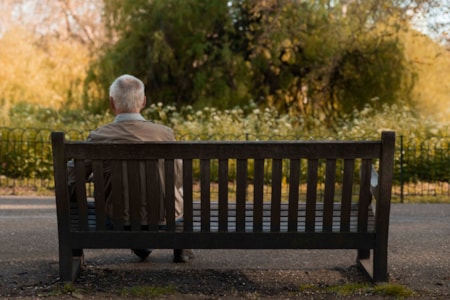
Western society, and Spain in particular, has a serious problem of loneliness and loss of family ties. Loneliness in the home is one of the worst consequences of falling birth and marriage rates and the high rate of family breakdown. According to the latest report ‘La soledad en España’, carried out by the CEU-CEFAS Demographic Observatory, the number of people living alone has increased since 1970: in 2024 there will be 8.2 times more people living alone than in 1970.
In the 1970 Population and Housing Census carried out by INE, 660,000 people lived alone in Spain, out of a population of 34.04 million living in 8.85 million households. 54 years later, the number of single-person households had risen to 5.4 million, out of a total population of 48.79 million living in 19.3 million households. The proportion of people living alone in our country rose from 1.9% in 1970 to 11.1% in 2024. In other words, one in nine people live alone and 28% of households are single-person households.
As can be seen in Figure 2, rates of loneliness in the home vary by gender, nationality and age group. In 2021, a total of 54% of single-person households were headed by a woman, although this is not a very pronounced gender difference in real terms, since 52% of those aged over 30 (the average age of leaving the parental home in Spain) were women, and this percentage of women reached 57% among those aged 65 and over, ages at which loneliness at home is much more common. In general, a higher percentage of Spaniards than foreigners live alone.
In Spain, hardly anyone under 20 lives alone and very few under 25. Between the ages of 30 and 59, there are more men than women living alone. However, from the age of 60 and with increasing age, the percentage of women living alone rises sharply and reaches almost 30% among Spaniards aged 65 and over, which is not the case for men in this age group.
In terms of marital status, single status is the most common situation for men living alone, followed by divorce. For women, widowhood is the first cause, followed by singlehood. There is also a small percentage of 'married' people living alone for both sexes, situations that may be due to separations that have not been legally formalised, to one of the partners working in another province or outside Spain (which is more common among men), or to married immigrants awaiting family reunification.
For adults under 60, the main cause of loneliness is being single. For men aged 50-79 and women aged 50-69, it is divorce. Among older adults, widowhood is the most common condition, although this is much more common among women (for men it is not the most common cause of loneliness until after the age of 80). Fifty-five per cent of women living alone are aged 65 and over, compared with only 27 per cent of men.
According to the data collected, people with a tertiary education are more likely to live alone between the ages of 30 and 49, especially if they are women. Between the ages of 30 and 49, the proportion of people living alone is higher among those with tertiary qualifications (intermediate, bachelor, master or doctorate) than among the rest of the population. This is particularly pronounced among women and even more so among those aged 30-39, where having a higher degree directly doubles the rate of loneliness in the household.
In addition to its impact on emotional wellbeing and the increased risk of mental health problems associated with it, domestic loneliness has significant economic costs due to the loss of household economies of scale and the need for many more households than in the past for the same total population in Spain, from an average of 3.9 persons per household in 1970 to 2.5 today (2.4 for Spaniards and 3.0 for immigrants). About three million more dwellings are needed now than were needed with the family patterns of 50 years ago. In 1970, according to the Population and Housing Census of that year, there were about 19 million adults emancipated from the parental home in Spain (with an average age of emancipation of about 25 years), living in 8.9 million family dwellings with or without their children, i.e. an average of 2.15 emancipated adults per household. A further 14.7 million people lived with them, the vast majority of whom were minors (12.7 million of whom were under 21).
At the beginning of 2021, with an average age at emancipation of 30, some 33 million emancipated adults were living in 18.5 million dwellings, with an average of 1.78 per household. With the average number of emancipated adults per household in 1970, 15 million dwellings would have been needed in 2021, not 18.2 million.
At a theoretical indicative cost of 150,000 to 200,000 euros per dwelling, three million additional dwellings would cost a total of 450,000 to 600 billion euros. Measured in terms of annual expenditure, if all these dwellings were rented at an average of 600-800 euros per month, this would mean an expenditure of 21-30 billion euros per year, i.e. 1.5%-2% of GDP. In short, expenditure that would not have been necessary with the family structures of 50 years ago.